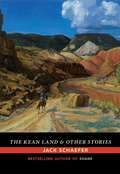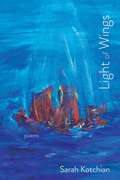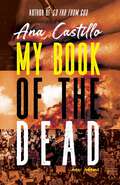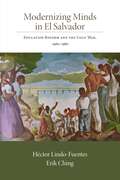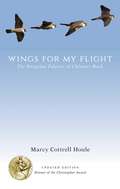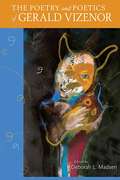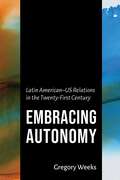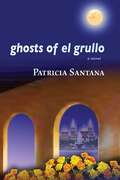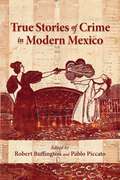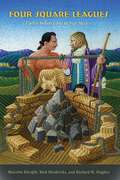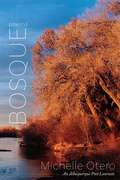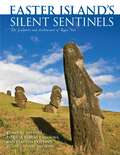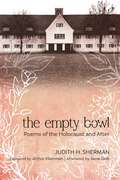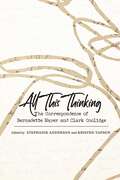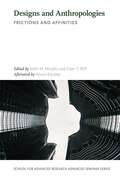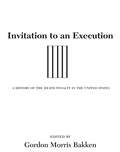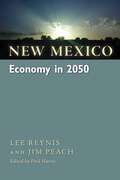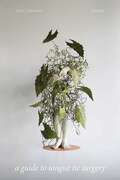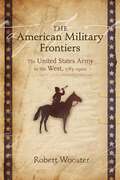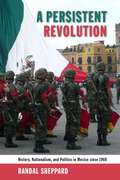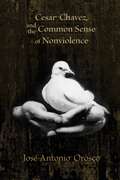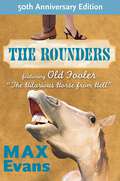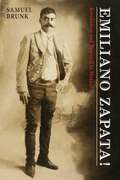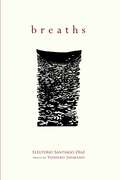- Table View
- List View
The Kean Land and Other Stories
by Jack SchaeferThe classic Western short stories in this Jack Schaefer collection explore the changing and often challenging truths found throughout the American West. The featured novella, &“The Kean Land,&” tells the story of young Ben Hammon as he arrives in western Colorado after the death of his parents to live with his small-town lawman uncle. The drama unfolds as Ben learns the ways of the land and the people who live there—including the Kean family. As &“progress&” pursues there is a dramatic price the Keans and others must pay to keep their land in this once hostile territory. How much blood must those who love the land pay in order to stay?
Light of Wings: Poems (Mary Burritt Christiansen Poetry Series)
by Sarah KotchianThis haunting collection merges spirit and nature in a voice both elegiac and celebratory. Kotchian explores our deep connection to the natural world, one increasingly at risk even as it continues to surprise and inspire. From meditations on the dangers of global warming to supporting a friend with cancer, from grieving the loss of her own mother to celebrating nature from New Mexico to a wild Scottish island, the poems celebrate both solitude and companionship and enlarge our concept of belonging and community, offering us threads of resilience, persistence, and hope.
My Book of the Dead: New Poems
by Ana CastilloFor more than thirty years, Ana Castillo has been mesmerizing and inspiring readers from all over the world with her passionate and fiery poetry and prose. Now the original Xicanista is back to her first literary love, poetry, and to interrogating the social and political upheaval the world has seen over the last decade. Angry and sad, playful and wise, Castillo delves into the bitter side of our world—the environmental crisis, COVID-19, ongoing systemic racism and violence, children in detention camps, and the Trump presidency—and emerges stronger from exploring these troubling affairs of today. Drawings by Castillo created over the past five years are featured throughout the collection and further showcase her connection to her work as both a writer and a visual artist. My Book of the Dead is a remarkable collection that features a poet at the height of her craft.
Modernizing Minds in El Salvador: Education Reform and the Cold War, 1960-1980 (Diálogos Series)
by Erik Ching Héctor Lindo-FuentesIn the 1960s and 1970s, El Salvador's reigning military regime instituted a series of reforms that sought to modernize the country and undermine ideological radicalism, the most ambitious of which was an education initiative. It was multifaceted, but its most controversial component was the use of televisions in classrooms. Launched in 1968 and lasting until the eve of civil war in the late 1970s, the reform resulted in students receiving instruction through programs broadcast from the capital city of San Salvador. The Salvadoran teachers' union opposed the content and the method of the reform and launched two massive strikes. The military regime answered with repressive violence, further alienating educators and pushing many of them into guerrilla fronts. In this thoughtful collaborative study, the authors examine the processes by which education reform became entwined in debates over theories of modernization and the politics of anticommunism. Further analysis examines how the movement pushed the country into the type of brutal infighting that was taking place throughout the third world as the U.S. and U.S.S.R. struggled to impose their political philosophies on developing countries.
Wings for My Flight: The Peregrine Falcons of Chimney Rock, Updated Edition
by Marcy Cottrell Houle&“Blends adventure, romance, humor and pathos. . . . Offers vivid descriptions of her sky-diving subjects and the seductive beauty of the wilderness.&”—Chicago Sun-Times&“Well crafted and compelling, a dramatization of the classic conflict between the legitimate interests of conservationists and developers. This is a fine book on several levels, as science, sociology, or a story. Highly recommended.&”—Library JournalForty years ago, the peregrine falcon was on the U.S. endangered species list and many doubted that it would survive. Marcy Houle was a young wildlife biologist observing one of the last remaining pairs—located at a site in southwest Colorado slated for development as a major tourist site. First published in 1991 and winner of several national awards, this book chronicles her work at Chimney Rock along with the recovery of the species. A new preface examines the last thirty years of the peregrine population and its remarkable comeback and culminates with President Barack Obama&’s designation of Chimney Rock as a national monument.
The Poetry and Poetics of Gerald Vizenor
by Deborah L. MadsenThe first book devoted exclusively to the poetry and literary aesthetics of one of Native America&’s most accomplished writers, this collection of essays brings together detailed critical analyses of single texts and individual poetry collections from diverse theoretical perspectives, along with comparative discussions of Vizenor&’s related works. Contributors discuss Vizenor&’s philosophy of poetic expression, his innovations in diverse poetic genres, and the dynamic interrelationships between Vizenor&’s poetry and his prose writings.Throughout his poetic career Vizenor has returned to common tropes, themes, and structures. Indeed, it is difficult to distinguish clearly his work in poetry from his prose, fiction, and drama. The essays gathered in this collection offer powerful evidence of the continuing influence of Anishinaabe dream songs and the haiku form in Vizenor&’s novels, stories, and theoretical essays; this influence is most obvious at the level of grammatical structure and imagistic composition but can also be discerned in terms of themes and issues to which Vizenor continues to return.
Embracing Autonomy: Latin American–US Relations in the Twenty-First Century (The Americas in the World Series)
by Gregory WeeksGregory Weeks's Embracing Autonomy departs from other general treatments of Latin American-US relations not by putting US policy aside but by bringing in the Latin American and global contexts more closely and thus avoiding the incomplete picture provided by a narrow focus solely on the policies of the United States.The core of autonomy for Latin America from the United States is seen in new, deeper, and more numerous relationships that do not include the United States. The book is not a study of rebellion against the United States, or even a critique of US policy. Instead, it is an examination of the major shifts that have taken place in the region in recent decades and how they have shaped Latin American-US relations.Weeks's book provides a clearer understanding of where Latin America stands vis-à-vis the United States in the early twenty-first century. In doing so, we gain a better sense of the trajectory of Latin American-US relations and how they develop in turbulent times.
Ghosts of El Grullo
by Patricia SantanaHaving left her much-loved San Diego barrio, Yolanda Sahagún is now living in the university dorms when a series of events--her mother dies and her father sells their home--forces her to re-examine her life. Yolanda visits her parents' hometown of El Grullo, Mexico, struggling to understand the ghosts in her life--her mother, her father, and her seemingly idyllic childhood. She fears losing herself in the disintegration of the family. For Yolanda, her father is her enemy (or so she thinks), and in the course of the novel we see him at his best and worst, and we see Yolanda at her best and worst.This is a story of Yolanda's initiation into womanhood and about her fierce struggle to make sure her family does not dissolve. Family and sexual politics; love, death, and abandonment; the struggle to resolve a personal identity in the context of a shattered, first-generation immigrant American family--these are the hugely painful obstructions Yolanda must surmount or incorporate into her own being as she makes her life's journey. Ghosts of El Grullo is a sequel to Santana's critically acclaimed and prize-winning Motorcycle Ride on the Sea of Tranquility.
True Stories of Crime in Modern Mexico (Diálogos Series)
by Robert Buffington and Pablo PiccatoCrime has played a complicated role in the history of human social relations. Public narratives about murders, insanity, kidnappings, assassinations, and infanticide attempt to make sense of the social, economic, and cultural realities of ordinary people at different periods in history. Such stories also shape the ways historians write about society and offer valuable insight into aspects of life that more conventional accounts have neglected, misunderstood, or ignored altogether. This edited volume focuses on Mexico's social and cultural history through the lens of celebrated cases of social deviance from the late nineteenth and early twentieth centuries. Each essay centers on a different crime story and explores the documentary record of each case in order to reconstruct the ways in which they helped shape Mexican society's views of itself and of its criminals.
Four Square Leagues: Pueblo Indian Land in New Mexico
by Rick Hendricks Malcolm Ebright Hughes W. RichardThis long-awaited book is the most detailed and up-to-date account of the complex history of Pueblo Indian land in New Mexico, beginning in the late seventeenth century and continuing to the present day. The authors have scoured documents and legal decisions to trace the rise of the mysterious Pueblo League between 1700 and 1821 as the basis of Pueblo land under Spanish rule. They have also provided a detailed analysis of Pueblo lands after 1821 to determine how the Pueblos and their non-Indian neighbors reacted to the change from Spanish to Mexican and then to U.S. sovereignty. Characterized by success stories of protection of Pueblo land as well as by centuries of encroachment by non-American Indians on Pueblo lands and resources, this is a uniquely New Mexican history that also reflects issues of indigenous land tenure that vex contested territories all over the world.
Bosque: Poems (The Albuquerque Poet Laureate Series)
by Michelle OteroNestled in the heart of Albuquerque is a vibrant cottonwood forest that has flourished for centuries along the Río Grande—providing a home for porcupines, migratory birds, coyotes, and other wildlife as well as a sanctuary for its city residents. Today, in the midst of climate change and the slow drying of the river, the bosque struggles to remain vibrant. As a former Albuquerque Poet Laureate, Michelle Otero champions this beloved Albuquerque treasure. In her debut poetry collection, Bosque, she celebrates the importance of water and the bosque to the people of Albuquerque. Otero shares her reflections on the high desert—where she is rooted, where she draws her strength, and where she has flourished—and she invites readers to do the same.
Easter Island's Silent Sentinels: The Sculpture and Architecture of Rapa Nui
by Kenneth Treister Patricia Vargas Casanova Cristino ClaudioIt may be the most interesting and yet loneliest spot on earth: a volcanic rock surrounded by a million square miles of ocean, named for the day Dutch explorers discovered it, Easter Sunday, April 5, 1722. Here people created a complex society, sophisticated astronomy, exquisite wood sculpture, monumental stone architecture, roads, and a puzzling ideographic script. And then they went about sculpting amazing, giant human figures in stone.This richly illustrated book of the history, culture, and art of Easter Island is the first to examine in detail the island&’s vernacular architecture, often overshadowed by its giant stone statues. It shows the conjecturally reconstructed prehistoric pole houses; the ahu, the sculptures&’ platform, as a spectacular expression of prehistoric megalithic architecture; and the Easter Island Statue Project&’s inventory of the colossal moai sculptures.This publication is made possible in part by a generous contribution from Furthermore: a program of the J. M. Kaplan Fund.
The Empty Bowl: Poems of the Holocaust and After
by Judith H. ShermanIn The Empty Bowl: Poems of the Holocaust and After, Holocaust survivor Judith H. Sherman strives to record trauma through art. Her poems, written largely in the words of a fifteen-year-old survivor, provide historical entry into the Holocaust. Put simply, the poems explore the reality of the events experienced by Sherman in her determination to survive—from first leaving home to illegal border crossings, hiding, capture, imprisonment by the Gestapo, the horrors of the Ravensbrück concentration camp, liberation, and, finally, a full life of joys and challenges that came after, including the unyielding intrusions of the past and hopeful celebration of a compassionate future.
All This Thinking: The Correspondence of Bernadette Mayer and Clark Coolidge (Recencies Series: Research and Recovery in Twentieth-Century American Poetics)
by Stephanie Anderson and Kristen TapsonAll This Thinking explores the deep friendship and the critical and creative thinking between Bernadette Mayer and Clark Coolidge, focusing on an intense three-year period in their three decades of correspondence. These fiercely independent American avant-garde poets have influenced and shaped poets and poetic movements by looking for radical poetics in the everyday. This collection of letters provides insight into the poetic scenes that followed World War II while showcasing the artistic practices of Mayer and Coolidge themselves. A fascinating look at both the poets and the world surrounding them, All This Thinking will appeal to all readers interested in post–World War II poetry.
Designs and Anthropologies: Frictions and Affinities (School for Advanced Research Advanced Seminar Series)
by Eitan Y. Wilf Keith M. MurphyThe chapters in this captivating volume demonstrate the importance and power of design and the ubiquitous and forceful effects it has on human life within the study of anthropology. The scholars explore the interactions between anthropology and design through a cross-disciplinary approach, and while their approaches vary in how they specifically consider design, they are all centered around the design-and-anthropology relationship. The chapters look at anthropology for design, in which anthropological methods and concepts are mobilized in the design process; anthropology of design, in which design is positioned as an object of ethnographic inquiry and critique; and design for anthropology, in which anthropologists borrow concepts and practices from design to enhance traditional ethnographic forms. Collectively, the chapters argue that bringing design and anthropology together can transform both fields in more than one way and that to tease out the implications of using design to reimagine ethnography—and of using ethnography to reimagine design—we need to consider the historical specificity of their entanglements.
Invitation to an Execution: A History of the Death Penalty in the United States
by Gordon Morris BakkenUntil the early twentieth century, printed invitations to executions issued by lawmen were a vital part of the ritual of death concluding a criminal proceeding in the United States. In this study, Gordon Morris Bakken invites readers to an understanding of the death penalty in America with a collection of essays that trace the history and politics of this highly charged moral, legal, and cultural issue. Bakken has solicited essays from historians, political scientists, and lawyers to ensure a broad treatment of the evolution of American cultural attitudes about crime and capital punishment.Part one of this extensive analysis focuses on politics, legal history, multicultural issues, and the international aspects of the death penalty. Part two offers a regional analysis with essays that put death penalty issues into a geographic and cultural context. Part three focuses on specific states with emphasis on the need to understand capital punishment in terms of state law development, particularly because states determine on whom the death penalty will be imposed. Part four examines the various means of death, from hanging to lethal injection, in state law case studies. And finally, part five focuses on the portrayal of capital punishment in popular culture.
New Mexico Economy in 2050
by Lee Reynis Jim PeachIn New Mexico Economy in 2050, an E-short edition from New Mexico 2050, two of the state&’s foremost economists, Lee Reynis of the University of New Mexico and Jim Peach of New Mexico State University, provide an overview of New Mexico&’s economy. Reynis and Peach present the dimensions and effects of income inequality in the region and how it can be ameliorated. This selection also includes two short guest essays, one by Henry Rael on tradition- and culture-based economic development, and the other by Chuck Wellborn on fostering and nurturing homegrown industry.
A Guide to Tongue Tie Surgery: Poems (Mary Burritt Christiansen Poetry Series)
by Tina CarlsonA Guide to Tongue Tie Surgery gives voice to abused children, murdered women, research animals, war veterans, and even metronomes and lampshades. In poems inspired by Ovid, Tina Carlson explores the roots of voicelessness and journeys into metamorphosis, granting speech to those ignored or victimized and thereby allowing them to provide witness to their own lives.
The American Military Frontiers: The United States Army in the West, 1783-1900 (Histories of the American Frontier Series)
by Robert WoosterAs the fledgling nation looked west to the land beyond the Appalachian Mountains, it turned to the army to advance and defend its national interests. Clashing with Spain, Britain, France, Mexico, the Confederacy, and Indians in this pursuit of expansion, the army's failures and successes alternately delayed and hastened western migration. Roads, river improvements, and railroads, often constructed or facilitated by the army, further solidified the nation's presence as it reached the Pacific Ocean and expanded north and south to the borders of Canada and Mexico. Western military experiences thus illustrate the dual role played by the United States Army in insuring national security and fostering national development.Robert Wooster's study examines the fundamental importance of military affairs to social, economic, and political life throughout the borderlands and western frontiers. Integrating the work of other military historians as well as tapping into a broad array of primary materials, Wooster offers a multifaceted narrative that will shape our understanding of the frontier military experience, its relationship with broader concerns of national politics, and its connection to major themes and events in American history.
A Persistent Revolution: History, Nationalism, and Politics in Mexico since 1968
by Randal SheppardSheppard explores Mexico&’s profound political, social, and economic changes through the lens of the persistent political power of Mexican revolutionary nationalism. By examining the major events and transformations in Mexico since 1968, he shows how historical myths such as the Mexican Revolution, Benito Juárez, and Emiliano Zapata as well as Catholic nationalism emerged during historical-commemoration ceremonies, in popular social and anti-neoliberal protest movements, and in debates between commentators, politicians, and intellectuals. Sheppard provides a new understanding of developments in Mexico since 1968 by placing these events in their historical context.The work further contributes to understandings of nationalism more generally by showing how revolutionary nationalism in Mexico functioned during a process of state dismantling rather than state building, and it shows how nationalism could serve as a powerful tool for non-elites to challenge the actions of those in power or to justify new citizenship rights as well as for elites seeking to ensure political stability.
The Last Hanging of Ángel Martinez (Lynn and Lynda Miller Southwest Fiction Series)
by Kate NilesWinner of the 2025 Zia Book Award from New Mexico Press Women 2024 Foreword INDIES Silver Winner for MysteryIn Taos County, New Mexico, probation officer Nina Montgomery thinks she knows all about Ángel Martinez, a “frequent flyer” in the judicial system for increasingly sadistic treatment of his ex-partner, Liza Monaghan. When Liza is found dead on her kitchen floor, everyone suspects Ángel—Nina most of all.When Ángel’s aunt Loretta, Nina’s neighbor and friend, asks her to look into Liza’s murder, Nina reaches out to friend and sheriff’s deputy Larry Baca and becomes embroiled in the case. As Nina delves into Ángel’s and Liza’s lives, she is surprised to learn that Ángel is a santero artist on the rise. A talented but struggling ceramic artist herself, Nina finds her worlds colliding when a Hollywood celebrity wants her art just as the entanglements of Ángel’s family history begin to suggest the source of Liza’s death. Amid the cultural and natural beauty of the Northern Rio Grande Valley, Nina finds herself steeped in the drama of a family gone terribly and violently wrong.
Cesar Chavez and the Common Sense of Nonviolence
by José-Antonio OroscoCesar Chavez has long been heralded for his personal practice of nonviolent resistance in struggles against social, racial, and labor injustices. However, the works of Gandhi and Martin Luther King Jr. have long overshadowed Chavez's contributions to the theory of nonviolence. José-Antonio Orosco seeks to elevate Chavez as an original thinker, providing an analysis of what Chavez called the common sense of nonviolence. By engaging Chavez in dialogue with a variety of political theorists and philosophers, Orosco demonstrates how Chavez developed distinct ideas about nonviolent theory that are timely for dealing with today's social and political issues, including racism, sexism, immigration, globalization, and political violence.
The Rounders
by Max EvansThe bawdy and moving story of two contemporary bronco busters, The Rounders, originally published in 1960, was Max Evans's first novel and is still his best known work, thanks largely to the success of the 1965 movie version starring Henry Fonda and Glenn Ford. Acclaimed for its realistic depiction of modern cowboying and for its humor, it is also a very serious work, described by the author as a tragicomedy.It is a book to read if you are in need of a good laugh or if you are tired of reading cowboy novels where there are no cows and where the cowhands never stop waiting around the local saloon for a final showdown with the visiting Indians.--San Francisco ChronicleOne of the funniest cowpoke yarns to come off the presses in many a fall roundup.--Denver Post
Emiliano Zapata!: Revolution and Betrayal in Mexico
by Samuel BrunkThe life of Mexican Revolutionary Emiliano Zapata was the stuff that legends are made of. Born and raised in a tiny village in the small south-central state of Morelos, he led an uprising in 1911--one strand of the larger Mexican Revolution--against the regime of long-time president Porfirio Díaz. He fought not to fulfill personal ambitions, but for the campesinos of Morelos, whose rights were being systematically ignored in Don Porfirio's courts. Expanding haciendas had been appropriating land and water for centuries in the state, but as the twentieth century began things were becoming desperate. It was not long before Díaz fell. But Zapata then discovered that other national leaders--Francisco Madero, Victoriano Huerta, and Venustiano Carranza--would not put things right, and so he fought them too. He fought for nearly a decade until, in 1919, he was gunned down in an ambush at the hacienda Chinameca. In this new political biography of Zapata, Brunk, noted journalist and scholar, shows us Zapata the leader as opposed to Zapata the archetypal peasant revolutionary. In previous writings on Zapata, the movement is covered and Zapata the man gets lost in the shuffle. Brunk clearly demonstrates that Zapata's choices and actions did indeed have an historical impact.
Breaths (Mary Burritt Christiansen Poetry Series)
by Eleuterio Santiago-DíazBreaths is a poetic exploration of Budo (the Japanese martial arts) and Zen. It delves into the relationship between these two traditions and projects their spirit onto the textures of everyday life. The poems balance action, energy, meditation, and contemplation on how to live attentively and actively in the world. Accompanied by Yoshiko Shimano&’s eloquent prints, these poems will energize and captivate readers while inviting them to seek their own paths to illumination.
